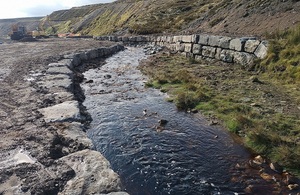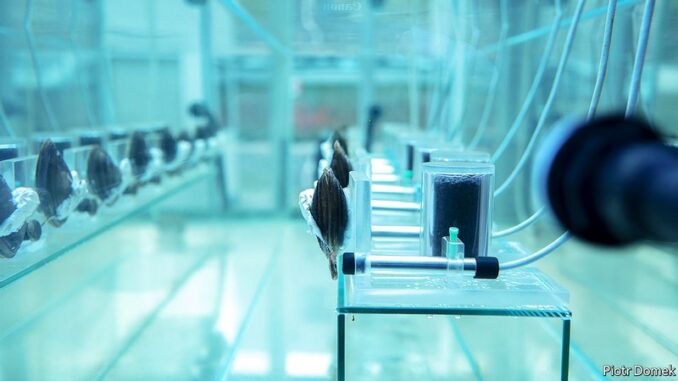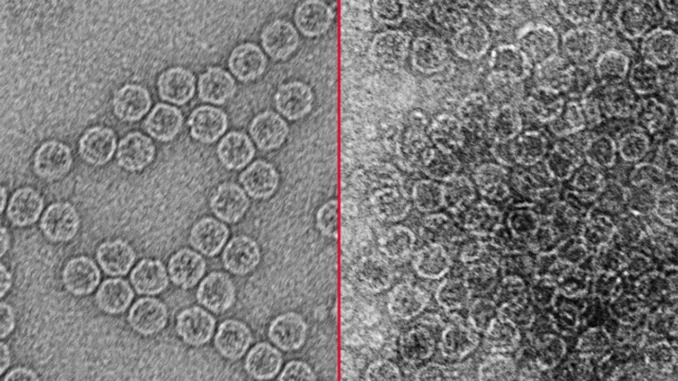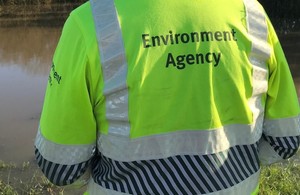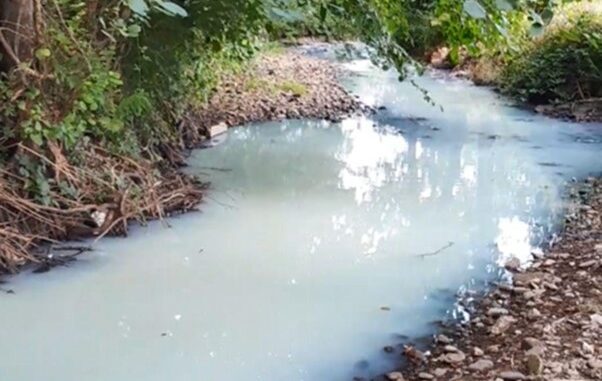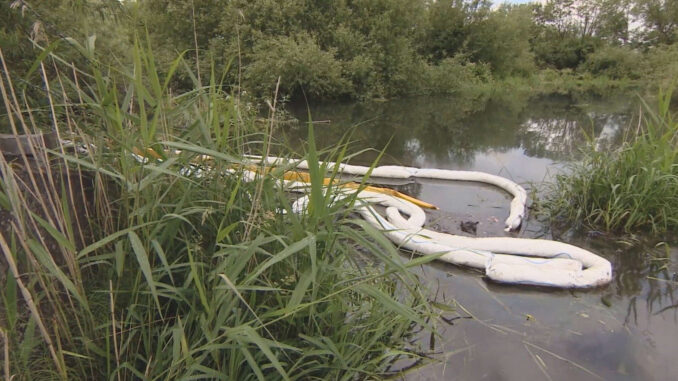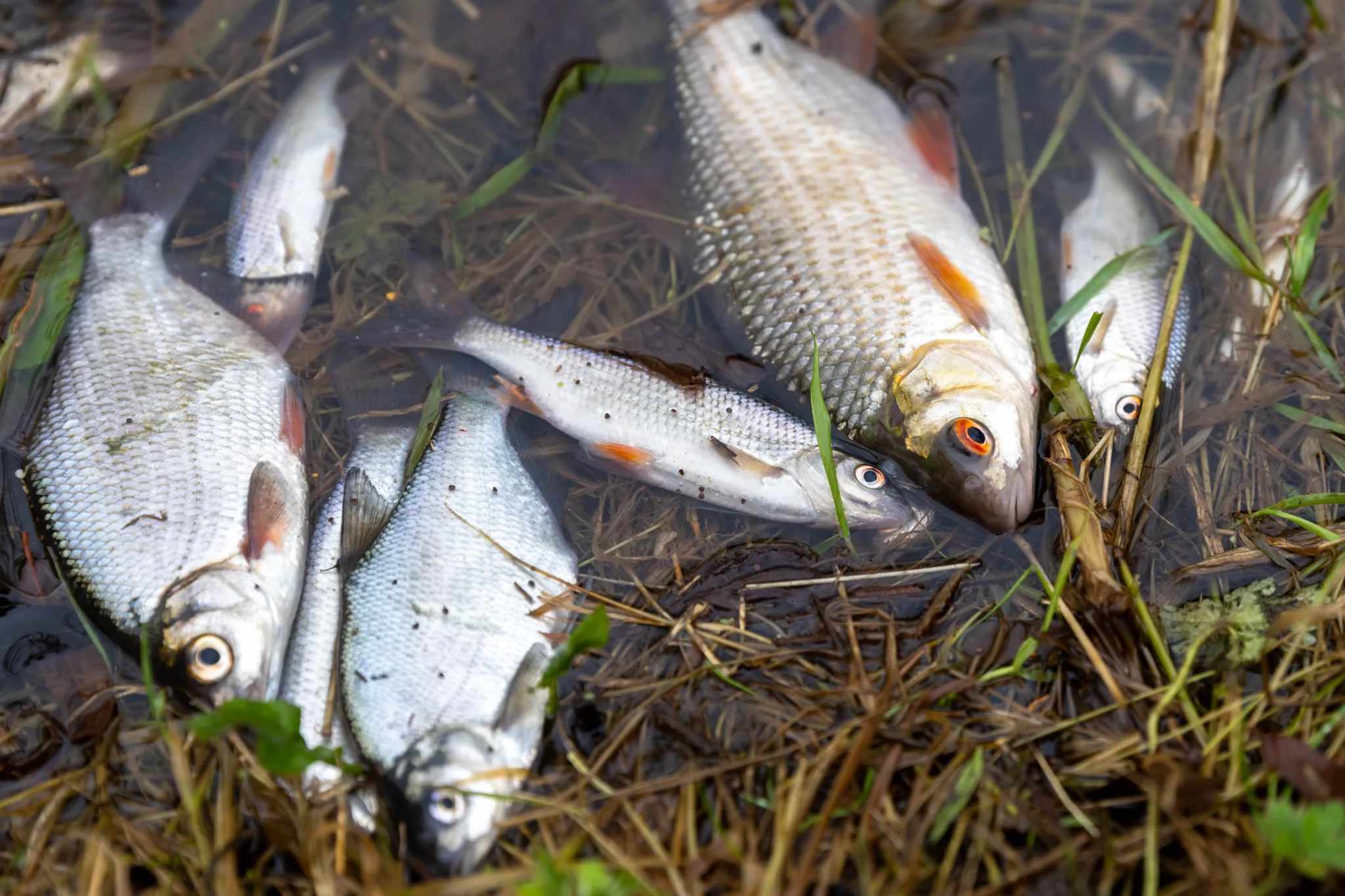A project to clean up the ‘most metal polluted river in northern England’ located in North Cumbria is underway.
The river Nent has elevated levels of cadmium, lead and zinc recorded throughout the river, and impacting the water, sediment and aquatic life for 60km to the Tyne Estuary.
The sediment, which collect the metals in the Tyne Estuary is dredged regularly and at great cost to maintain access to shipping berths.
The Romans first dug lead out of the North Pennines, but the peak of metal mining was in the 1800s. Although almost all the mines had been closed by the early 20th Century, they have since flooded and polluted water continues to pour out of the ground and will do so for hundreds of years without Government action.
As a result of the region’s industrial past, minewater seeps into the watercourse harming fish and other river life so the Department for Environment Food & Rural Affairs, The Coal Authority and the Environment Agency are in the process of reducing current pollution levels by installing the Nent Mine Water Treatment Scheme to capture metals that would otherwise end up polluting rivers.
The Environment Agency said: “We are continuing to work on the proposed mine water treatment scheme at Nenthead that aims to improve water quality in up to 60km of polluted rivers.
“We have revised our timetable and are now expecting to be ready to submit a planning application in 2024, once final designs have been developed.”
A community meeting about the project was scheduled for December 2023 but was called off by the Environment Agency due to poor weather conditions.
In the proposals, Mine water will be captured from the Caplecleugh and Rampgill adits and taken to ‘treatment ponds’ where the metal pollution will be taken from the water.
To get to the treatment pools, the water will need to go to a pumping station with the Environment Agency’s preferred location at the Nenthead car park.
Mine water will be then pumped through a buried pipe up to the treatment pond.
The Environment Agency is currently investigating whether it can put a new pipe inside the existing disused metal pipe that runs up the track from the carpark to near the Handsome Mea reservoir but if not, they will have to dig out this disused pipe and replace it with a new pipeline.
Zinc and cadmium will be removed from the mine water in nature-based treatment ponds containing a layer of straw, wood bark and limestone, where naturally occurring bacteria help to capture the metals.
The mine water takes about 15 hours to pass through the treatment layer to give enough time for the metals to be captured by natural reactions.
The treated mine water will pass through an odour control system to remove any substances that may cause an ‘odour nuisance’.
The treatment process converts some of the sulphate found naturally in the mine water into sulphide.
Most of this sulphide binds to the metals and is stored in the treatment layer. Low concentrations of sulphide may remain dissolved in the treated mine water, and if not controlled, have the potential to cause odours if released to air as hydrogen sulphide which is the rotten egg smell associated with decaying plants in ponds.
The process will see hydrogen peroxide added to the treated mine water before any hydrogen sulphide can be released to air. This quickly transforms any hydrogen sulphide back into sulphate and so prevents an ‘odour nuisance’.
The final part of the process involves passing the treated mine water through an aerobic reed bed as a final polishing step before the treated water returning to the river Nent upstream of the adits using a gravity pipeline.
The initial project was first announced in 2020 but has yet to fully begin and these are just the Environment Agency’s initial plans for the project.
When the scheme was announced in 2020, Rachael Caldwell, Environment Manager at the Environment Agency in the North East, said:
“This project will have an immediate impact on water quality in the rivers Nent and South Tyne and in future, will help improve sediment quality in the Tyne estuary.
“It will make a huge difference to the natural environment, boosting biodiversity right across the South Tyne River system, and will bring economic benefits, improving tourism and industry.
“As well as the new mine water treatment scheme, we’re working with Tyne Rivers Trust which is using natural interventions to reduce the impact from spoil heaps.
“Our rivers are the healthiest they’ve been for 20 years, but further improvement is now hindered by longstanding chronic types of pollution.
“Therefore, projects like this are playing an important role in ensuring future generations are able to enjoy our clean waters for years to come.”
The project does have the backing of local MP, Dr Neil Hudson but he called for further engagement with the local community.
The local community are concerned plans to house a pumping station in the car park at Nenthead Mines, so close to residential properties and local businesses, as well as peat bogs and important habitats potentially disrupted, could be problematic.
They are also keen to maintain a buoyant tourist economy and want to make sure building works, HGV routes and noisy pumping machinery does not disrupt that.
Dr Neil Hudson MP said: “We are absolutely blessed with some of the most striking landscapes in the country all throughout the North Pennines and I am absolutely committed to preserving them and stamping out the blight of water pollution.
“But this cannot come at the expense of local people who live and work in Alston Moor and Nenthead communities. I am committed to supporting local people, elevating their voices and making sure there are meaningful channels for engagement with the relevant authorities.
“Any development must respect the unique features of these rural communities and bring benefits to the people living here. We’ve developed some important action points from our meeting, and I will continue to liaise with all relevant stakeholders as we move towards an equitable solution.”
Further progress on the project is expected in 2024 when the Environment Agency hopes to submit a planning application.
Source: News & Star The Cumberland News


